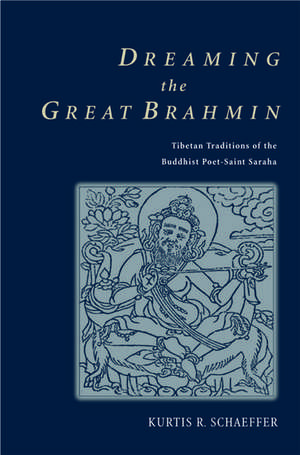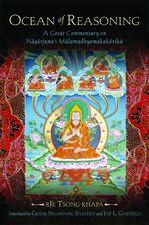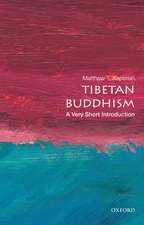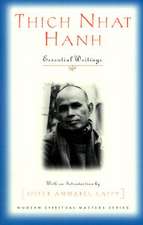Dreaming the Great Brahmin: Tibetan Traditions of the Buddhist Poet-Saint Saraha
Autor Kurtis R. Schaefferen Limba Engleză Hardback – 23 iun 2005
Preț: 597.78 lei
Preț vechi: 858.19 lei
-30% Nou
Puncte Express: 897
Preț estimativ în valută:
114.41€ • 119.12$ • 96.68£
114.41€ • 119.12$ • 96.68£
Carte tipărită la comandă
Livrare economică 27 februarie-05 martie
Preluare comenzi: 021 569.72.76
Specificații
ISBN-13: 9780195173734
ISBN-10: 0195173732
Pagini: 240
Dimensiuni: 166 x 236 x 19 mm
Greutate: 0.49 kg
Editura: Oxford University Press
Colecția OUP USA
Locul publicării:New York, United States
ISBN-10: 0195173732
Pagini: 240
Dimensiuni: 166 x 236 x 19 mm
Greutate: 0.49 kg
Editura: Oxford University Press
Colecția OUP USA
Locul publicării:New York, United States
Recenzii
This is a splendid contribution to the growing body of materials about Saraha and his famed treasury of tantric songs with a special focus on the Tibetan creation, and recreation, of both over the centuries. Schaeffer examines both in the larger contexts of Tibetan literature, history and aesthetics, tracing the development of the figure of Saraha and his esoteric poetry in Tibetan narratives, ritual cycles, visions, iconography, and polemical debate. He reveals Saraha's famous anthology, The Treasury of Doha, to be a rich, creative and fluid communal tradition that had an organic life in Tibet, rather than a static composition with origins lost in an Indian past. This wonderful blend of the social analysis, aesthetics, and translation is an important work for Tibetan, Buddhist, and Tantric studies.
















